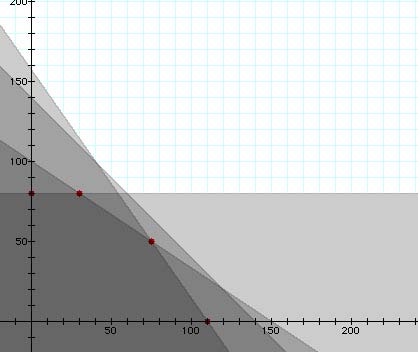Let's have another look at the feasible region:

This feasible region includes the point on the graph where the Woos would make the most profit.
Our next goal is to find the point on the graph where the most profit can be made. Say, we are a consulting team and we are to help the Woos figure out what they need to do in order to make the most profit. We must be clear with our explanation so that we will be chosen again to help consult.
First, let's figure out what point on the graph gives maximum profit:

We know that the maximum profit point is represented by one of the intersection points shown above. How do we find these points? The two on the axes are easily obtained: (0,80) and (110,0). We need to set the equations of intersecting lines equal to each other to get an ordered pair for the remaining two points.







